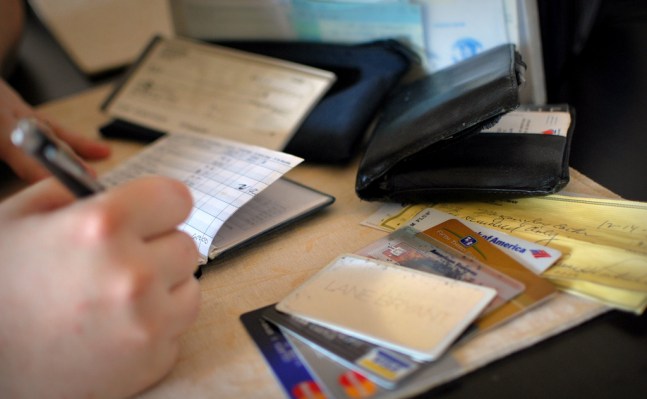As GoDaddy gears up for a $100 million IPO, the domain and web services company is adding on more features that will help it make more profitable revenues from its 12 million small-business customers. The latest of these puts GoDaddy further into the world of e-commerce.
Today, it is launching “Get Paid,” a new online and mobile payments service created with existing digital payments heavyweights PayPal, Dwolla and Stripe.
Get Paid will let users, most of whom had not been taking payments electronically before, accept credit cards, debit cards, eChecks (ACH) and PayPal transfers, and it will be available first to GoDaddy’s 9 million users in the U.S.
GoDaddy will offer it in three service tiers starting at $4/month and increasing up to $15/month depending on added features like expense tracking, connecting your bank account and other accounting integrations.
GoDaddy’s fees are outside of the commissions that the three individual services take on each transaction. You can see those transaction rates for the different services here.
While Get Paid is GoDaddy’s first go at payments, it is not entirely out of context. The company already offers other financial services for small businesses in the form of accounting and billing. In the case of these two, the company grew by acquisition, buying bookkeeping startup Outright in 2012 and invoicing startup Ronin in 2013. It also recently added an Office 365 integration with Microsoft.
The reason that GoDaddy decided to add payments is because they were seeing a regular complaint from their customers about getting paid in a timely and easy way for products and services, the company says.
“They were using a hodge podge of different methods to collect payments,” says Steven Aldrich, GoDaddy’s SVP of applications (who joined GoDaddy as part of the Outright acquisition). “Less than half of our users accept credit cards, some would invoice, some would take sales over the phones. Small businesses were losing track of who paid what and who owed money, rather than just getting paid then and there. When you are talking about businesses that may only be pulling in $40,000 per year, every dollar makes a difference.”
Aldrich says that the company decided for now to partner with established payment companies. “We work through build, buy or partner ideas, and here we decided partnering was the right way to go,” he says.
The reason for this, he explains, is two-fold. PayPal, Dwolla and Stripe are already services that its customers are using; and each of the three offer strengths in different areas.
Professional services firms that can charge up to $1,000 on average for a transaction, he says, are uncomfortable running that with credit card rates, so Dwolla works better for those “high ticket” cases.
PayPal, meanwhile, is so huge that many of GoDaddy’s customers already have PayPal accounts, so this was the obvious route to take for mobile and point-of-sale payments (via PayPal’s Here offering). Aldrich says that the mobile element was a “must have” in whatever payment service GoDaddy built.
And Stripe, he says, offers a “really innovative credit card processing service, with great support for developers. You can basically start taking payments right away.”
For some of this, GoDaddy has been laying groundwork for some time, and it will be equally useful for the smaller of these three partners, Dwolla and Stripe, into pick up new business from the 12 million+ customers on GoDaddy’s books.
But if partnering is the way today, but it may not be tomorrow. There are a lot of payment startups out in the market, some creating interesting technology but not necessarily seeing the right customer traction, making them ripe acquisition targets.
“We’ll continue to look at it,” Aldrich says. “There are a bunch of payments providers out there today and a lot of activity going on. We don’t know what the future will hold so I don’t know where our payments strategy could lead over time.”
GoDaddy — currently loss-making, although narrowing those losses (it made $1.13 billion in 2013, with $199.88 million in net losses) — may soon see more competition in its bread-and-butter business. Namely, Google is now testing its own domain registration service called Google Domains.
That will inevitably lead to GoDaddy looking for more ways to “Get Paid” in the future. Aldrich wouldn’t specify what might be next in the pipeline, although you can imagine how other services around, say, business support services like online help desks, or online marketing services and more booking forms to link up with invoicing, could be in the mix.
The general focus will be on adding more features to run a business more efficiently, he says. “I think it’s great what Google is doing. Our job is to keep innovating to differentiate ourselves.
“Longer term, how can we tip the playing field in favor of small businesses? The economy has shifted and people have to create their own jobs, and we want to help them do that.”
Image: Flickr
